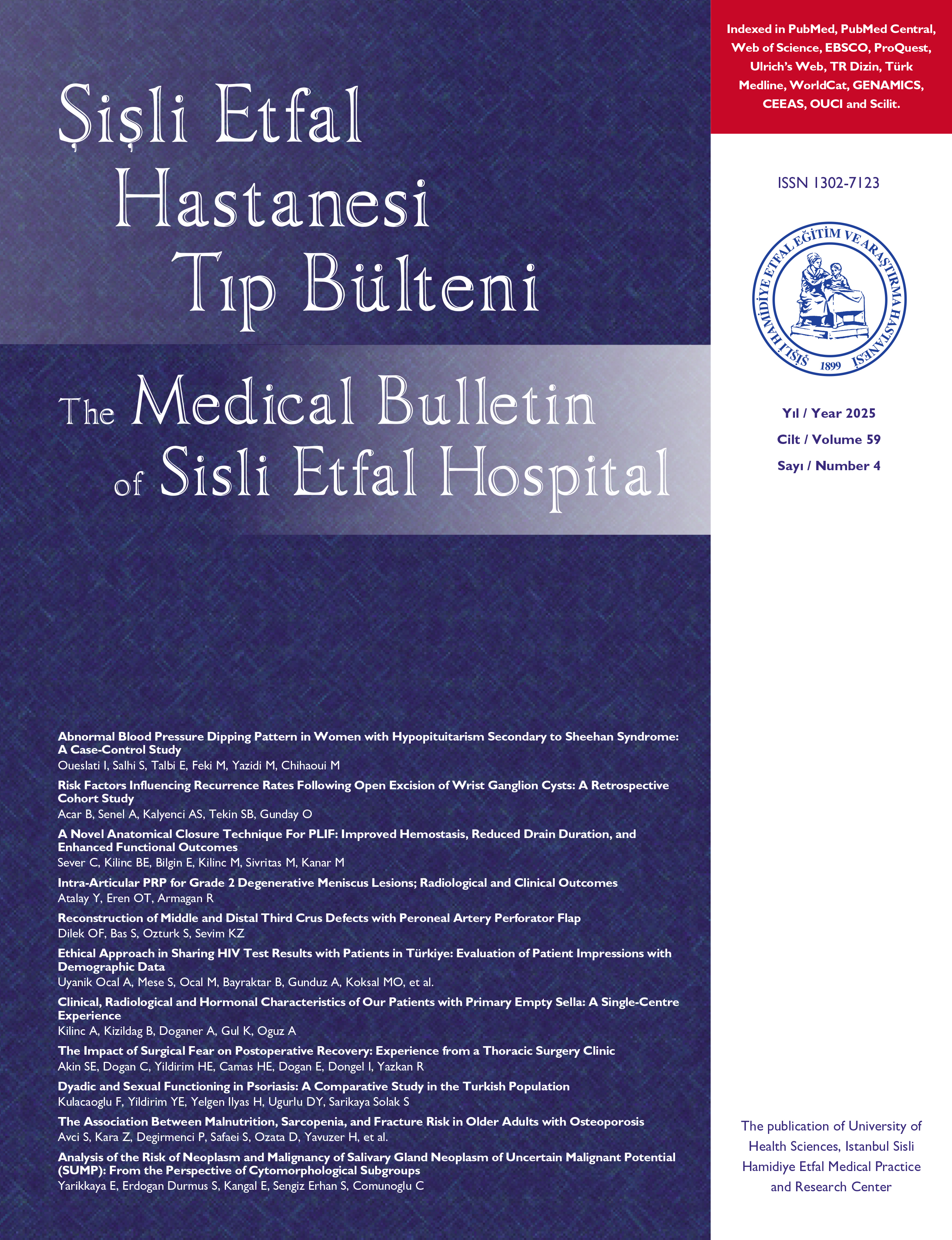
Çocuklarda 1-2 cm Alt Pol Böbrek Taşlarının Tedavisinde En İyi Yaklaşım Hangisidir? Mini Perkütan Nefrolitotomi veya Retrograd İntrarenal Cerrahi
Yusuf Arikan1, Enes Dumanli1, Yusuf Alper Kara2, Ali Kumcu3, Mehmet Zeynel Keskin1, Ulas Can Erdogan11İzmir Tepecik Eğitim ve Araştırma Hastanesi, Üroloji Kliniği, İzmir2İzmir Bayraklı Şehir Hastanesi, Çocuk Cerrahisi Kliniği, İzmir
3Tekirdağ Dr. İsmail Fehmi Cumalıoğlu Şehir Hastanesi, Üroloji Kliniği, Tekirdağ
Amaç: Böbrek taşları birçok yöntemle tedavi edilmektedir, ancak 1-2 cm alt böbrek taşlarında hangi yöntemin tercih edilmesi gerektiği konusunda fikir birliği yoktur. Çalışmamızda alt renal pol 1-2 cm taşlarında mini (Perkütan Nefrolitotomi) PCNL ve (Retrogarad İntrarenal Cerrahi) RIRS sonuçlarını araştırmayı amaçladık.
Materyal-Metod: Yirmi dört Mini PCNL ve 55 RIRS hastası çalışmaya dahil edildi. Hastaların demografik verileri ve Non-Kontrast Bilgisayarlı Tomografi (NCCT)'deki taş bilgileri kaydedildi. Her iki yöntemin taşsızlık durumu (SFR), ek tedavi ihtiyacı ve komplikasyonları karşılaştırıldı.
Bulgular: Ameliyat süresi Mini PCNL'de 55.2±20.8 dk iken RIRS'de 70.7±36.5 dk idi ve istatistiksel olarak anlamlı derecede daha düşüktü (p=0.002). Hastanede kalış süresi Mini PCNL'de 2.4 ± 1.5 gün ve RIRS'de 1.3 ± 0.7 gün olup istatistiksel olarak anlamlı derecede uzundu (p=0.011). Ameliyat sonrası 1. ay ve 3. ay taşsızlık oranlarında SFR mini PCNL grubunda daha yüksekti. Birinci ay SFR sırasıyla %91,6 ve %54,5 iken, üçüncü ay taşsızlık oranları %95,8 ve %69,1 idi (p<0,001). Yeniden tedavi ihtiyacı mini PCNL grubunda istatistiksel olarak daha düşüktü (p<0.001). Komplikasyonlar açısından, komplikasyon insidansı mini PCNL grubunda %16,6 (2 hastada ağrı, 1 hastada ateş, 1 hastada kan transfüzyonu ihtiyacı) ve RIRS grubunda %21,8 (2 hastada ağrı, 8 hastada ateş, 2 hastada sepsis) idi. İki grup arasında anlamlı bir fark vardı (p=0.008).
Sonuç: Mini PCNL daha yüksek SFR'ye, daha az yeniden tedavi ihtiyacına ve daha az komplikasyona sahiptir. (SETB-2024-04-070)
Anahtar Kelimeler: Fleksibl üreterorenoskopi, böbrek taşı, mini PCNL, retrograd intrarenal cerrahi
In the Treatment of Lower Pole Kidney Stones Between 1-2 cm in Children, Which is the Best Approach? Retrograde Intrarenal Surgery or Mini Percutaneous Nephrolithotomy
Yusuf Arikan1, Enes Dumanli1, Yusuf Alper Kara2, Ali Kumcu3, Mehmet Zeynel Keskin1, Ulas Can Erdogan11Department of Urology, Izmir Tepecik Training and Research Hospital, Izmir, Türkiye2Department of Pediatric Surgery, Izmir Bayrakli City Hospital, Izmir, Türkiye
3Department of Urology, Tekirdag Dr. Ismail Fehmi Cumalioglu City Hospital, Tekirdag, Türkiye
Objective: Kidney stones are treated with many methods, but there is no consensus on which method should be preferred for 1-2 cm lower renal stones. In our study, we aimed to investigate the results of mini (Percutaneous Nephrolitotomy) PCNL and (Retrograde Intrarenal Surgery) RIRS in lower renal pole 1-2 cm stones.
Material-Methods: Twenty-four Mini PCNL and 55 RIRS patients were included in the study. Demographic data of the patients and information about stones on Non-Computed Tomography (NCCT) were recorded. Stone free status (SFR), need for additional treatment and complications of both methods were compared.
Results: Operative time was 55.2±20.8 min in Mini PCNL and 70.7±36.5 min in RIRS, which was statistically significantly lower (p=0.002). Length of hospital stay was 2.4 ± 1.5 days in the Mini PCNL and 1.3 ± 0.7 days in the RIRS, which was statistically significantly longer (p=0.011). In the postoperative 1st month and 3rd month stone-free rates (SFR) was higher in the mini PCNL group. While the 1st month SFR was 91.6% and 54.5%, the 3rd month stone-free rates were 95.8% vs 69.1%, respectively (p<0.001). The need for re-treatment was statistically lower in the mini PCNL group (p<0.001). In terms of complications, the incidence of complications was 16.6% (pain in 2 patients, fever in 1 patients, need for blood transfusion in 1 patient) in the mini PCNL group and 21.8% (pain in 2 patients, fever in 8 patients, sepsis in 2 patients) in the RIRS group. There was a significant difference between the two groups (p=0.008).
Conclusion: Mini PCNL have a higher SFR, less need for re-treatment and fewer complications.
Keywords: Flexible ureterorenoscopy, kidney stone, mini PCNL, retrograde intrarenal surgery
Makale Dili: İngilizce



















